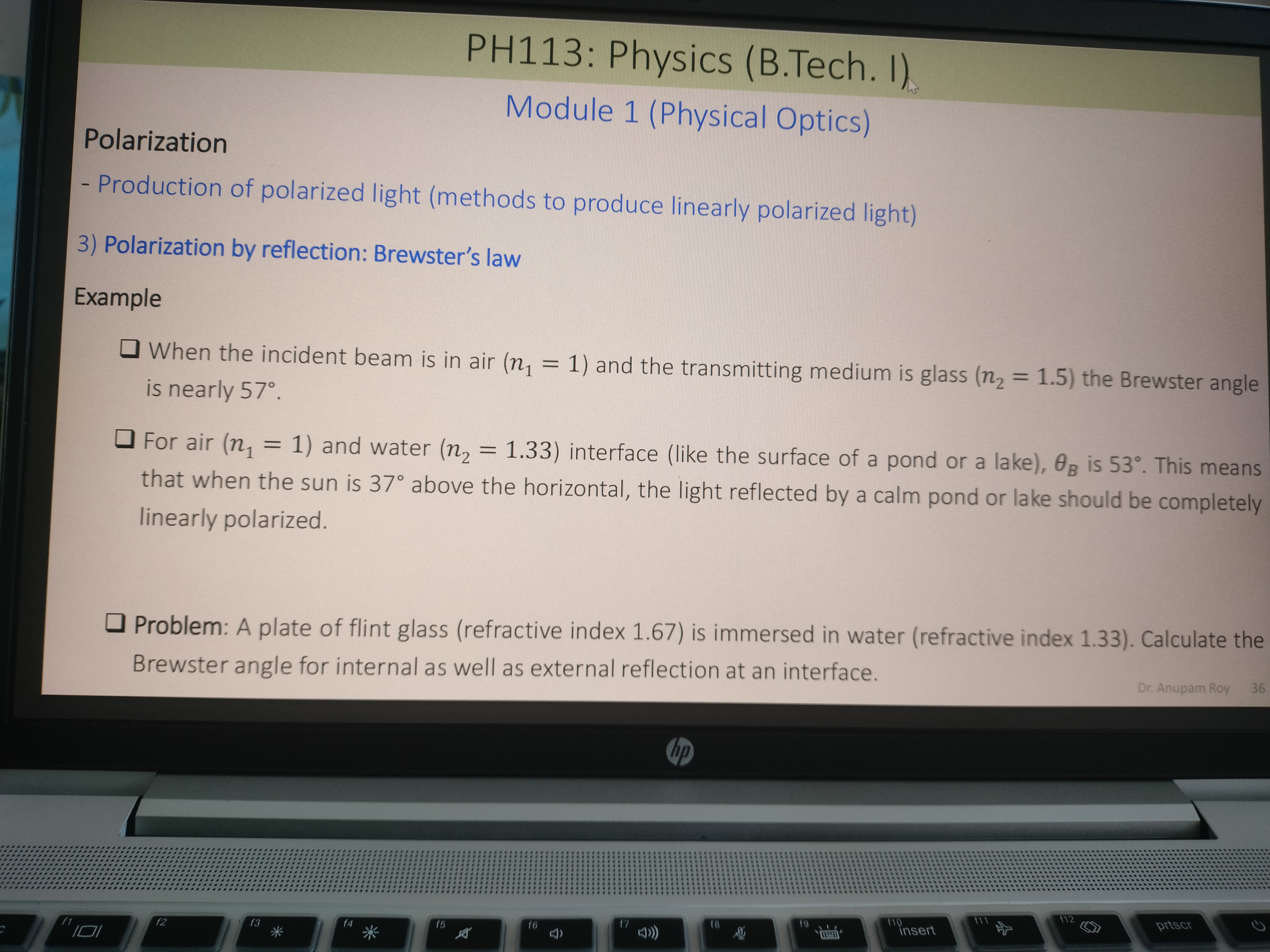A plate of flint glass (refractive index 1.67) is immersed in water (refractive index 1.33). Calculate the Brewster angle for internal as well as external reflection at an interfac... A plate of flint glass (refractive index 1.67) is immersed in water (refractive index 1.33). Calculate the Brewster angle for internal as well as external reflection at an interface.

Understand the Problem
The question is asking to calculate the Brewster angle for a plate of flint glass in water at the interface, given their refractive indices. This involves understanding the relationship between incident and transmitted light at the interface.
Answer
The Brewster angle for external reflection is \( \theta_B \approx 51.7^\circ \) and for internal reflection \( \theta_B \approx 38.6^\circ \).
Answer for screen readers
The Brewster angle for external reflection is approximately ( \theta_B \approx 51.7^\circ ) and for internal reflection, it is approximately ( \theta_B \approx 38.6^\circ ).
Steps to Solve
- Identify refractive indices
Given: ( n_1 = 1.33 ) (water) and ( n_2 = 1.67 ) (flint glass).
- Use Brewster's Law
Brewster's angle, ( \theta_B ), is given by the formula: $$ \tan \theta_B = \frac{n_2}{n_1} $$
- Calculate Brewster's angle for external reflection
Plug the values into the formula: $$ \tan \theta_B = \frac{1.67}{1.33} $$
Calculate: $$ \tan \theta_B = 1.253 \implies \theta_B = \tan^{-1}(1.253) $$
- Calculate Brewster's angle for internal reflection
For internal reflection at the glass-water interface, the formula is: $$ \tan \theta_B = \frac{n_1}{n_2} $$
Substituting the values: $$ \tan \theta_B = \frac{1.33}{1.67} $$
Calculate: $$ \tan \theta_B = 0.7964 \implies \theta_B = \tan^{-1}(0.7964) $$
The Brewster angle for external reflection is approximately ( \theta_B \approx 51.7^\circ ) and for internal reflection, it is approximately ( \theta_B \approx 38.6^\circ ).
More Information
Brewster's angle is the angle at which light with a particular polarization is perfectly transmitted through a transparent dielectric surface, with no reflection. At this angle, the reflected light is completely polarized perpendicular to the plane of incidence.
Tips
- Forgetting to convert angles if needed, confusing degrees with radians.
- Using the wrong order of refractive indices; remember that ( n_1 ) is the medium through which light comes and ( n_2 ) is the medium into which it enters.
AI-generated content may contain errors. Please verify critical information